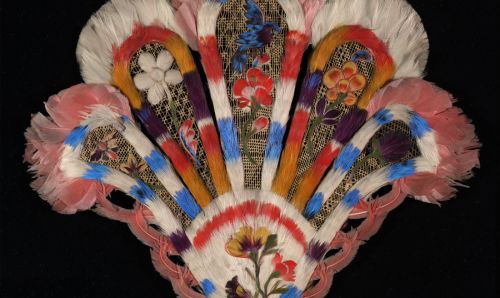Feathers, Cognition and Global Consumerism in Colonial Amazonia
Stefan Hanß (Senior Lecturer in Early Modern History).

This project is a collaboration between The John Rylands Research Institute and Library Manchester and the Fitzwilliam Museum Cambridge, led by Stefan Hanß, which reconsiders the material history of Amazonian feather-working. Amazonia has a history of being the home of the largest variety of birds in the world. In such a uniquely creative material environment, craft cultures flourished by translating the beauty and creativity of environmental materials like feathers into stunning pieces of art, as exemplified by a seventeenth-century feather fan that survives in the Fitzwilliam Museum.
To fully capture the cognitive achievements and material history of this artefact, the fan has now been studied with advanced imaging by The John Rylands Research Institute and Library. The analysis was combined with in-depth archival research and affect theory.
Such research shows how artistic encounters with Amazonian feathers changed during the first age of global consumerism. In a forthcoming article in Current Anthropology (in press), Hanß examines how new ways of handling and thinking with feathers emerged in Dutch Brazil. He shows how Amazonian biocreativity provoked artisanal entrepreneurship across the seventeenth-century globe, and how the resulting global exploitation of Amazonian birds, feathers and Indigenous knowledge affected Amazonian life and South American biodiversity in return.
Developing a new methodology for the study of historical featherwork, this project uncovers the global scale of the trade in materials, the transmission of artisanal knowledge, and the blurred boundaries of consumer cultures in the seventeenth-century Dutch Empire.
Current projects
Our research work is improving our understanding of people, cultures and societies around the world.
Read more
Past projects
An overview of completed projects from the John Rylands Research Institute and Library dating from 2017.
Read more
